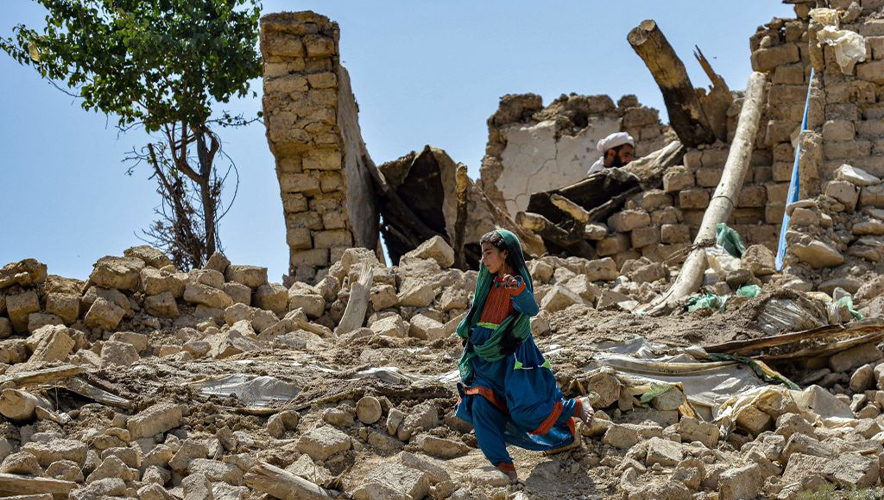Relief Mission Faces Obstacles After Massive Earthquake in Afghanistan
Issues with communications and road access are hindering relief efforts in Afghanistan after a 5.9 magnitude earthquake hit the nation on Wednesday, killing at least 1,000 people and injuring at least 1,500 more.
“It’s not clear how the totals were arrived at, given the difficulties of accessing and communicating with the affected villages tucked into remote mountainsides,” according to the Associated Press. “Either grim toll would make the quake Afghanistan’s deadliest in two decades, and officials continued to warn the number could still rise.”
The earthquake struck 6.1 miles southeast of the capital city of Kabul and is the nation’s deadliest earthquake in two decades, Reuters reports. Local residents and officials immediately began to respond to the incident, but broader infrastructure challenges are hampering the greater response effort.
“We can’t reach the area, the networks are too weak, we are trying to get updates,” said Mohammad Ismail Muawiyah, a spokesman for a Taliban military commander, that spoke to Reuters about telephone networks.
The incident also marks the first major disaster to hit the country since the Taliban resumed control of Afghanistan following the United States and its allies withdrew in August 2021.
“The humanitarian situation had deteriorated alarmingly since the Taliban takeover, aid officials say, with the country cut off from much international assistance because of sanctions,” Reuters reports.
For instance, the Taliban has not issued a formal request for the United Nations to mobilize international search-and-rescue teams or to get equipment from its neighboring nations to aid in the response—which is needed as Afghanistan has only a few ambulances and helicopters of its own, said Ramiz Alakbarov, UN deputy special representative to Afghanistan, in an interview with The Guardian.
Despite the lack of a formal request, the United Nations has been given full access to the area and its World Food Programme (WFP) is sending food and logistics equipment to the region in an effort to support 3,000 households.
“The Afghan people are already facing an unprecedented crisis following decades of conflict, severe drought and an economic downturn,” said Gordon Craig, the WFP deputy country director in Afghanistan. “The earthquake will only add to the already massive humanitarian needs they endure daily.”
Other aid organizations have also stepped up to supply medical kits, tents, and plastic tarps, but cautioned that may not be enough because of the devastation to local communities. Many Afghan homes and buildings are constructed out of mud bricks, which can make them more vulnerable to earthquakes—especially when coupled with landslides caused by quakes and subsequent tremors.
“We ask from the Islamic Emirate and the whole country to come forward and help us,” said Hakimullah, a survivor who spoke to the Associated Press. “We are with nothing and have nothing, not even a tent to live in.”
Afghanistan has a history of deadly earthquakes, including a 6.6. magnitude earthquake in the same region in May 1998 that killed 4,700 people.
